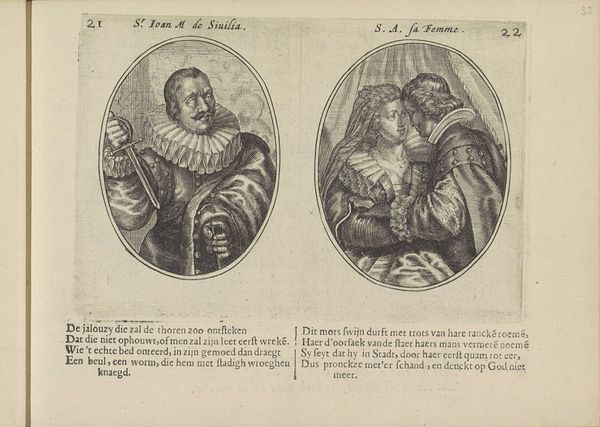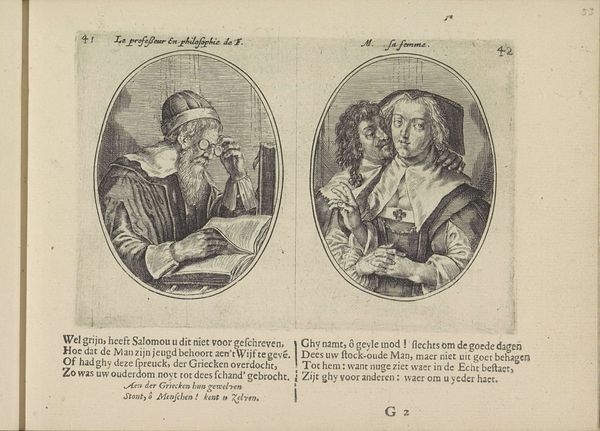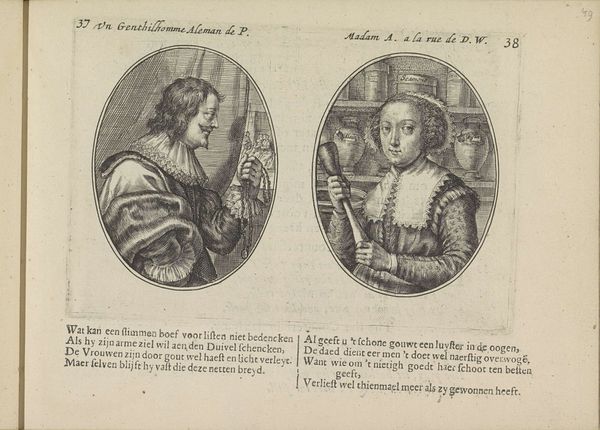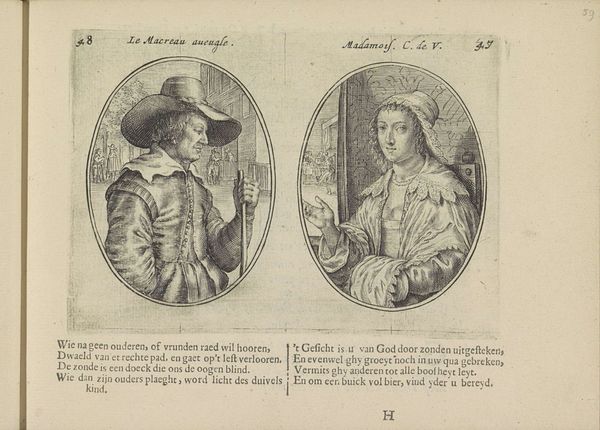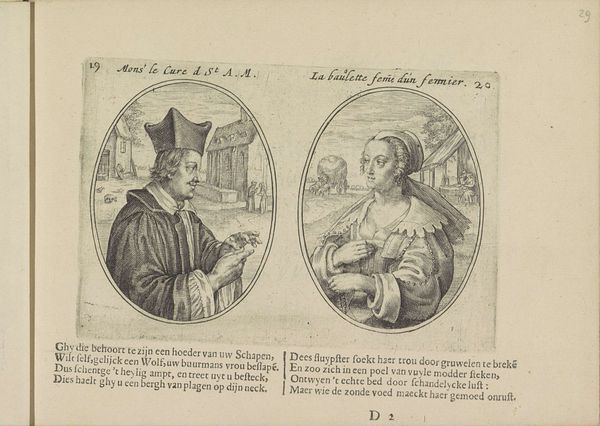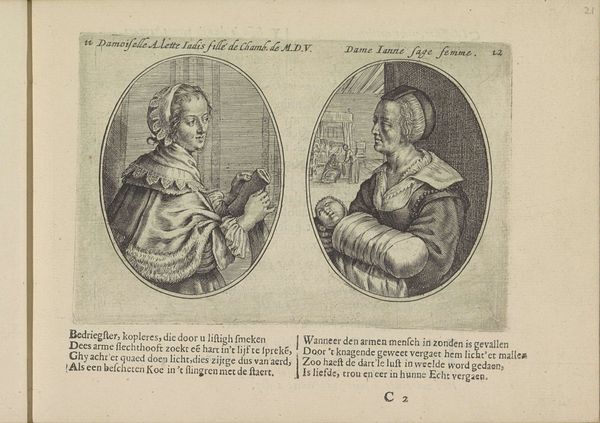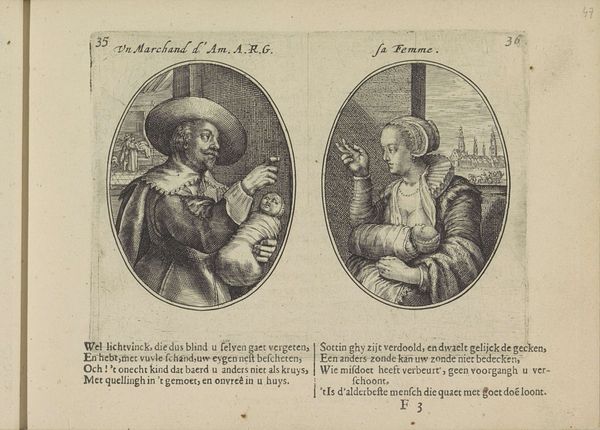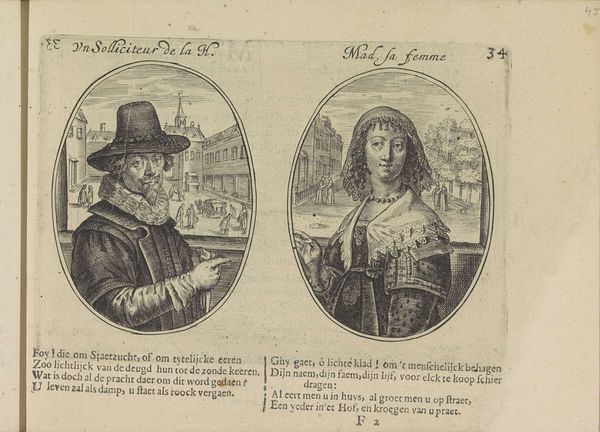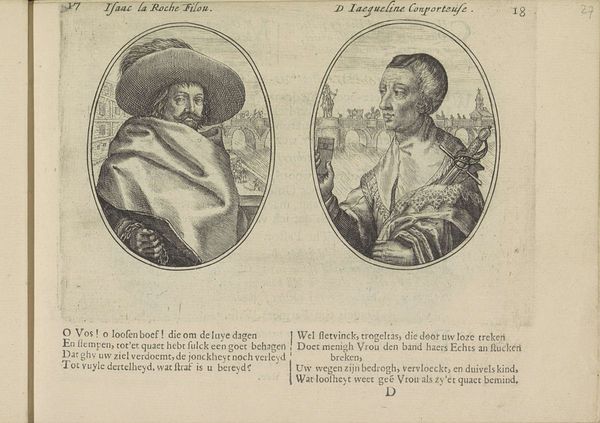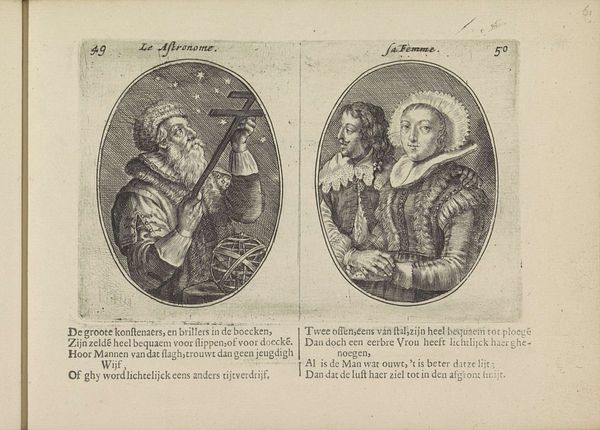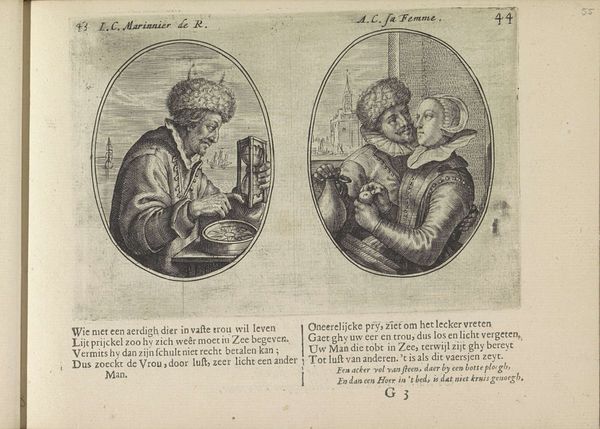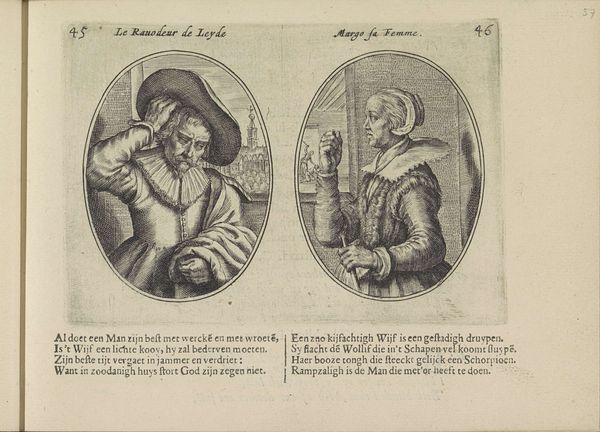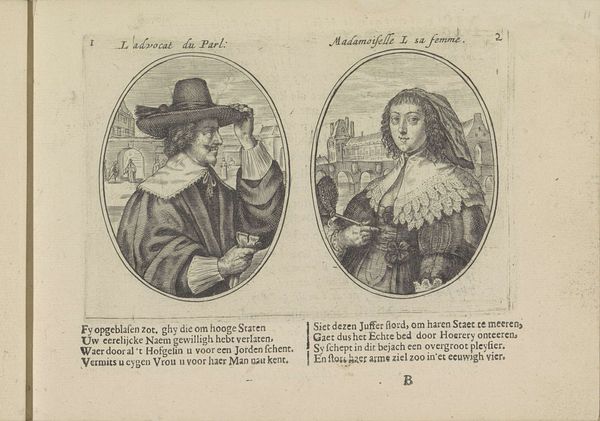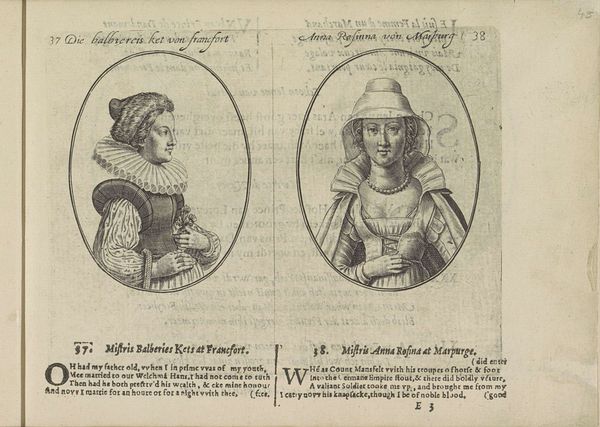
print, engraving
#
portrait
#
baroque
# print
#
old engraving style
#
history-painting
#
engraving
Dimensions: height 98 mm, width 146 mm
Copyright: Rijks Museum: Open Domain
Curator: This engraving by Crispijn van de Passe the Younger, created in 1641, is titled “Heer van S.H. en zijn vrouw," or “Lord of S.H. and his wife.” Editor: Immediately striking are the stark contrasts, not only in age between the portrayed couple but in the graphic intensity achieved through line and hatching. The man's somber expression, juxtaposed with the suggestive whispers around his wife, create a tension, a disquieting atmosphere. Curator: The work consists of two portraits framed in ovals, each accompanied by an inscription below. It is rendered in that distinctive old engraving style of the period, focusing on meticulous detail and linear precision. Editor: Contextually, such depictions were frequently laden with commentary on social issues, marital dynamics, and class. I wonder if the choice of engraving reflects not just stylistic preferences but a desire to disseminate these narratives more broadly. Look at the inscriptions below the characters: these contain social commentary through poetic statements on old and young marriage. Curator: Certainly, the formality in the execution—the precise rendering of costumes, the calculated use of light and shadow to define form—suggests an intention to convey meaning. Editor: Precisely. It provokes us to confront not only the aesthetics of representation but the societal expectations embedded within that representation. The work offers, as it were, a critique of arranged marriages and generational imbalances. The poem next to the “Milord” talks about what moved him to marry and the discomfort a young lady may find in marrying an old and haggard man, implying he shouldn’t have married at all. The writing on the “Melady's” side states women were only created for their use in these times, that woman's role has shifted further away from God. Curator: Indeed, these poems emphasize social expectations of marital behavior. It provides additional textual depth that complicates any single formalist interpretation. Editor: So while we analyze the piece through its formal elements and linear style, it is essential to discuss it's connection to marriage's socio-historical role, adding richer meanings than one might expect. Curator: Ultimately, Passe's meticulous craft invites reflection on societal structures, offering a fascinating interplay between artful form and loaded context. Editor: Agreed. And, with it's blend of artistic presentation and thematic density, encourages audiences to view the dynamics within marriages in this period.
Comments
No comments
Be the first to comment and join the conversation on the ultimate creative platform.
